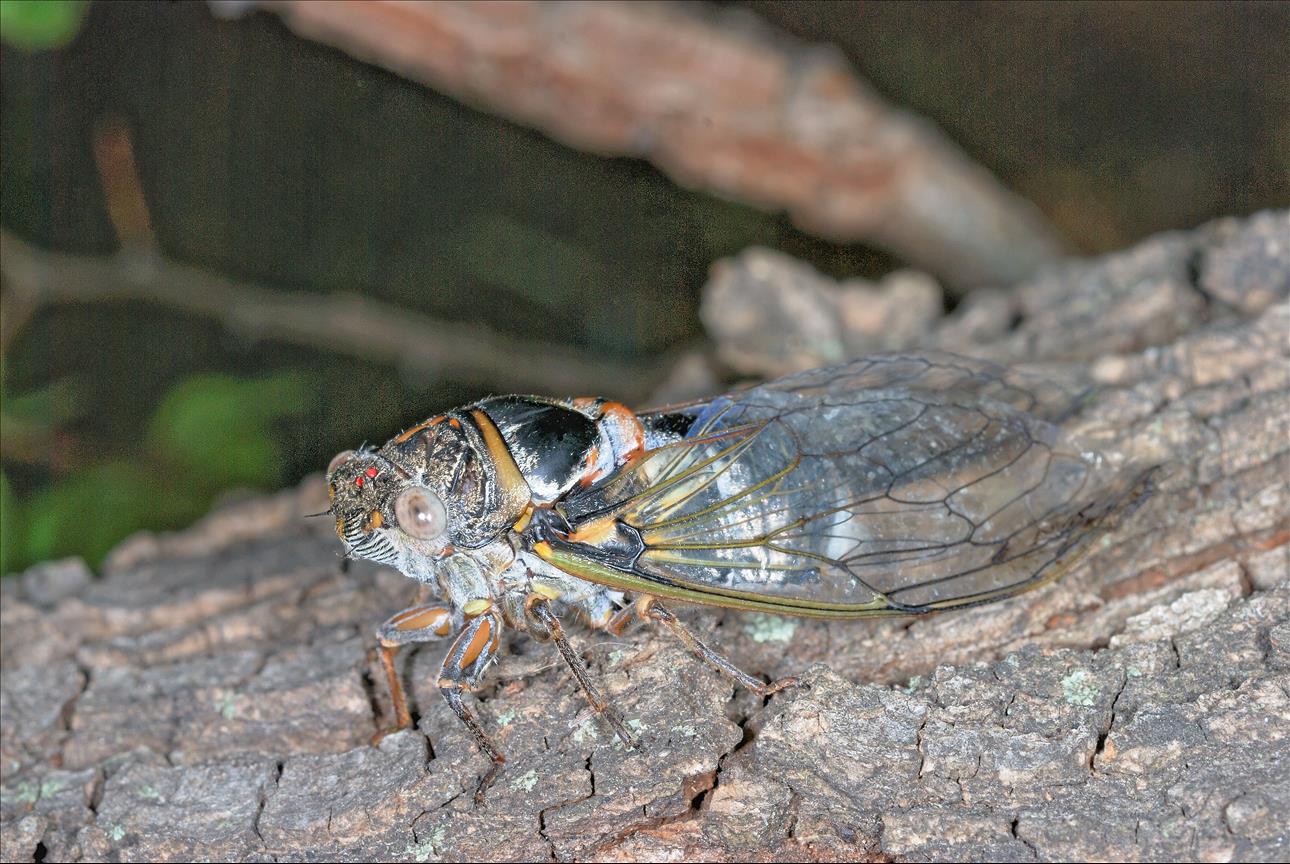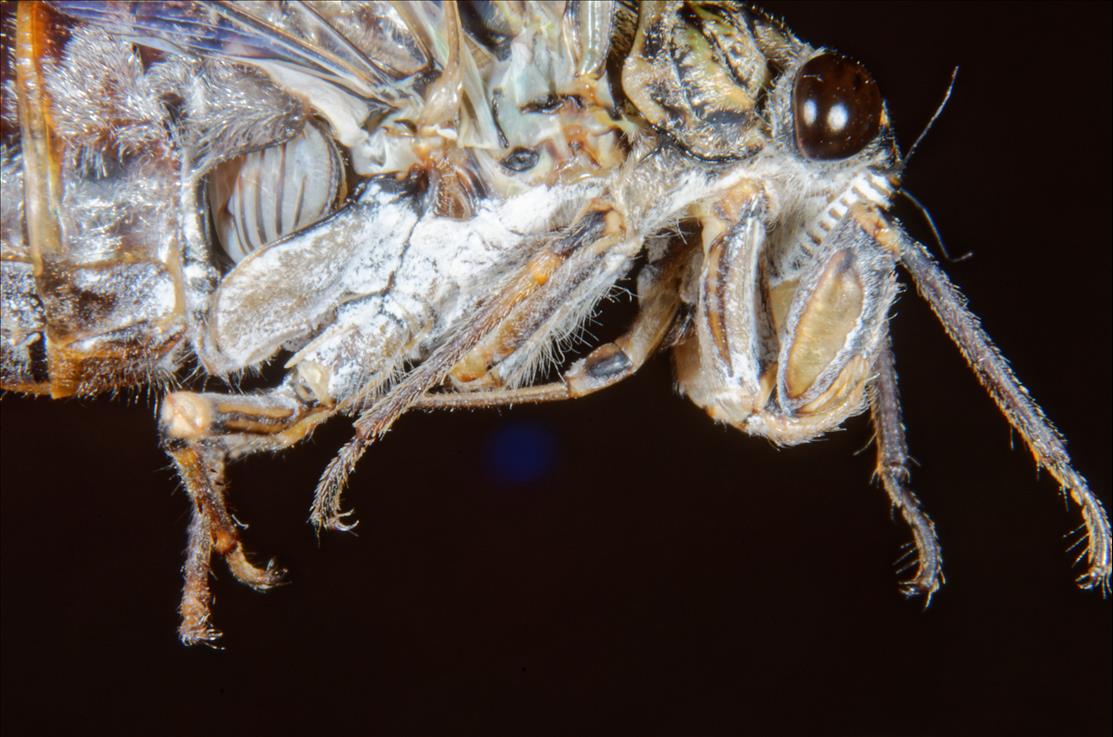Author:
Romain Garrouste
(MENAFN- The Conversation)
Over the course of a week this summer, the Massif des Maures in the Var region of southern France fell prey to the flames of an enormous wildfire. For successive days, the fire engulfed the region's unique ecosystems, fuelled by changes in wind, surprising firefighters and their reinforcements with sudden flare-ups as unforeseen as they were violent.
During one of these terrible days, I took part in a reconnaissance mission in the National Nature Reserve of the Plaine des Maures to record the impact of the fire and to save what could be saved.
Lire cet article en français : Pourquoi, malgré les flammes si proches, les cigales continuent de chanter
The landscape was largely devastated, but here and there were untouched islets of biodiversity, unharmed or merely licked by the flames. These surviving patches of land will play an important role in the restoration of the ecosystem – the nuclei from which the reconquest of small fauna and flora will begin, helped by stones, slabs and other shelters beneath which some life has been maintained.
On this small scale, we can see a tiny slice of past extinction crises, after which the Earth saw the reconquest of ecosystems on a planetary scale over millions of years.
The hardy cicada
Despite the carnage, a few cicadas have continued to sing on the plains, as if indifferent to the cataclysm they have faced, surviving simply because they were able to fly away. A part of their offspring – small larvae that feed on roots, sometimes for several years – will also have escaped disaster, well buried and protected by the soils.

Portrait of Lyriste plebejus, the great cicada. Romain Garrouste, Fourni par l'auteur This is part of the cycle of our Mediterranean ecosystems, where insects sink into the depths to escape the drought, the heat and, at the same time, the fires.
Depending on the temperature of the fires, just a few centimetres are enough to protect them. Underground, they use their own urine, resulting from their consumption of sap, to build their burrows, maintain humidity and ward off predators like shrews or moles.
Small insect, big instrument
The cicada has given Provence its unchanged soundscape since time immemorial. It is part of the landscape in the broadest sense of the term, including anthropological.
They are an integral part of the local culture – Nobel Prize-winning author Frédéric Mistral and auteur Marcel Pagnol, among others, have celebrated the insect in their works. At the beginning of the 20th century, ceramic potters in Aubagne, near Marseille, made the cicada an emblem of Provence.
When cicadas sing their hearts out, it can quickly become deafening, though those of southern France are not the loudest – their cousins in the tropics can produce up to 120 decibels worth of noise .
The cicada's singing organ is very sophisticated: it is a kind of cymbal-like musical instrument built into their abdomen with hard parts and specialised muscles that can vibrate at almost 1,000 times per second – this is called“cymbalisation”. It is a highly sophisticated example of bioacoustics – the technology that gives insects their sonic prowess in combination with a well-developed eardrum to detect the noise.

Cicada orni's cymbal organs in action. To the left of the base of the wings, we see the right cymbal, protected by an operculum. Romain Garrouste, Fourni par l'auteur Almost all insects from the Hemiptera order, to which cicadas belong, have this type of organ, but most are not well developed and often remain hidden in the abdomen, used to allow most of these insects to communicate by vibration. These vibrations are mostly imperceptible to us, and only sophisticated recording systems can detect them.
Researchers have often overlooked this highly developed mode of communication in bugs and leafhoppers, for example, which communicate via the soil or vegetation in which they live.
Understanding the communication of these insects is crucial to understanding their relationships with our crops, where many Hemiptera pose real concerns, directly or as vectors of plant pathogens.
Will cicadas soon sing all year?
In Provence, a summer without cicadas would not be a summer at all. Two species dominate the soundscape : the large cicada, Lyristes plebejus, and the grey cicada, Cicada orni.
Their camouflage makes them very discreet on the trunk or branches of a tree, and the sound that guides us to discover them is sometimes strangely modulated – we often look in the wrong place, especially as they do not hesitate to run around trunks to hide when humans approach.
Read more: French wildfires have destroyed one of the most unique biodiversity hotspots in Europe
For some years now, the cicadas of Provence have sung through summer and into autumn, as the climate warms. For the time being, they remain legendarily silent in the winter, as cited in the famous fable collected by Jean La Fontaine in the 17th century:“When the north wind began to blow”.
But with winters where daytime temperatures are now likely to exceed 20°C , we may well soon hear the song of cicadas all year round, like those of the small tree frogs, Hyla arborea and Hyla meridonialis, which can now be heard on sunny winter days.
To listen to cicadas all year round, consult the French National Museum of Natural History sound library .
This article was originally published in French

MENAFN22092021000199003603ID1102847046
Legal Disclaimer:
MENAFN provides the information “as is” without warranty of any kind. We do not accept any responsibility or liability for the accuracy, content, images, videos, licenses, completeness, legality, or reliability of the information contained in this article. If you have any complaints or copyright issues related to this article, kindly contact the provider above.